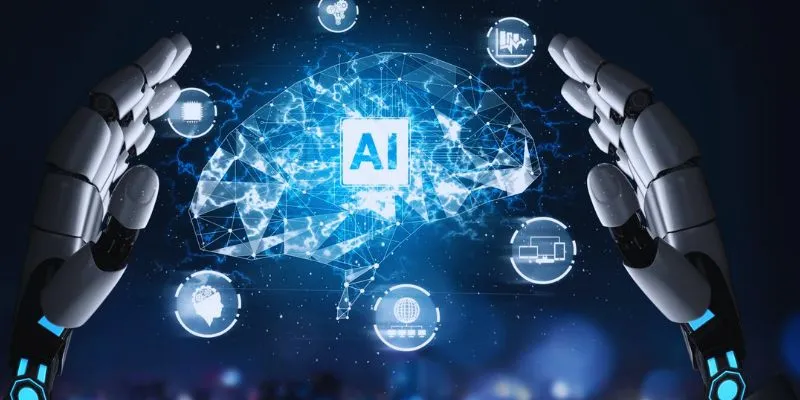In today’s fast-paced world, technology is revolutionizing the business landscape, particularly in customer service. One major innovation is voice- based conversational AI. This advanced system can comprehend and respond to human speech, allowing for quicker resolutions to customer issues. It can manage multiple interactions simultaneously, offering a personalized experience. But the question remains: Can it completely replace human customer service? In this article, we’ll explore how businesses can reduce customer service costs and delve into the technologies that make voice-based conversational AI so effective.
Why Are Customer Service Costs So High?
Customer service can be costly due to several factors. Salaries for customer support teams constitute the largest expense. Additionally, training and equipping these teams with the necessary tools add to the costs. As businesses grow, these expenses also increase. Starting a company from scratch requires significant investment in a customer support team. Moreover, outdated tools and methods can negatively impact sales, as customers expect seamless and efficient service. The advent of voice-based conversational AI offers a cost- effective solution to these challenges.

How Voice AI Lowers Customer Service Costs
Voice-based conversational AI offers several ways to reduce customer service expenses:
Automation of Routine Customer Queries
Voice AI can independently handle multiple queries, such as order tracking, return policies, or store locations. This automation eliminates the need for human agents to manage each query, saving time and money and allowing human staff to focus on more complex issues.
Reduced Staffing Costs and Premium Pay
By training voice AI to manage routine calls, companies can reduce the need for additional staff. Unlike human agents, Voice AI doesn’t require overtime or premium pay for night shifts or holidays, ensuring 24/7 availability without extra expenses.
Cutting Operational Expenses
Voice AI streamlines operations by automating call routing, CRM updates, and ticket creation. These efficiencies decrease the cost per call and reduce the resources needed to operate a contact center, allowing businesses to reinvest in product quality and customer trust.
24/7 Support Availability
Providing continuous and rapid service at any time, voice AI builds customer trust and satisfaction. It reduces the need for extra staff during off-hours and handles high call volumes during peak times or special events without delays.

What Makes Voice AI So Effective?
The effectiveness of voice AI is rooted in several key technologies:
Natural Language Processing (NLP)
Natural Language Processing (NLP) is crucial for voice AI, enabling the system to understand and interpret human language. NLP analyzes text input to generate appropriate responses and works with Automatic Speech Recognition (ASR) to process voice inputs. It structures unorganized data for machines to read and respond to accurately, enhanced by advanced machine learning algorithms for precise and relevant responses.
Integration with CRM and Telephony Systems
Voice AI becomes even more powerful when integrated with Customer Relationship Management (CRM) and telephony systems. This integration allows access to customer data, such as purchase history or past interactions, and improves call routing by directing customers to the appropriate department or agent, reducing wait times and enhancing operational efficiency.
The Future of Customer Service
The future of customer service lies in a balance between automation and human interaction. While AI excels in handling routine tasks, it lacks the emotional intelligence needed for complex issues. Hybrid models, combining AI and human agents, have emerged as the standard. AI can gather data and suggest responses, which human agents can then refine. In summary, human involvement remains essential, but integrating AI can significantly enhance service quality.
Conclusion
As businesses grow, they require cost-effective customer service solutions to handle queries efficiently. While human agents demand salaries and training, voice-based conversational AI offers a 24/7 solution, managing multiple queries simultaneously. However, AI cannot entirely replace the emotional intelligence of humans. The optimal service model today is a hybrid approach, utilizing AI for general queries while human agents address complex and personalized issues.
FAQs (Frequently Asked Questions)
- What is Voice AI, and how does it work in customer service?
Voice AI is technology-driven by artificial intelligence that facilitates voice-based customer interactions. It employs Automatic Speech Recognition (ASR) to convert speech into text, then uses Natural Language Processing (NLP) to understand intent and generate responses using Natural Language Generation (NLG). Finally, Text-to-Speech (TTS) technology converts these responses back into speech.
- Can Voice AI improve customer experience?
Yes, Voice AI enhances customer experience by providing swift and accurate responses, reducing wait times, and offering personalized assistance using customer data.
- Is Voice AI capable of multilingual support?
Yes, Voice AI can offer multilingual support by quickly translating queries and responding in the customer’s preferred language, facilitating businesses to serve a diverse customer base and overcome language barriers.
 zfn9
zfn9























